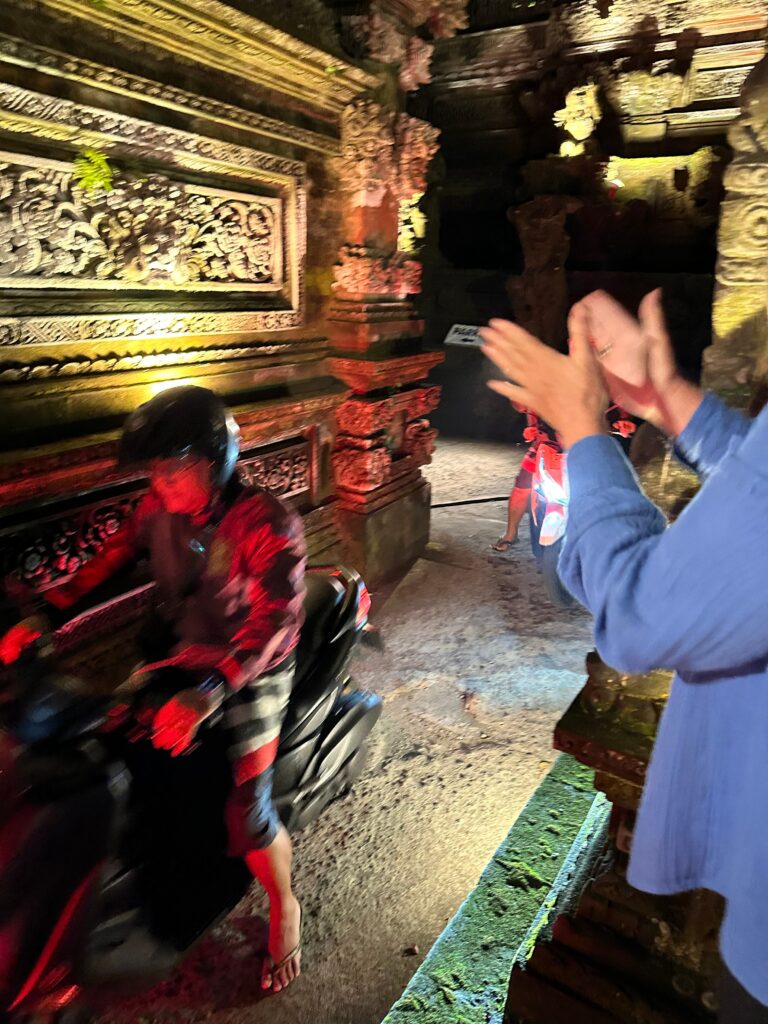Yesterday, we moved from a quiet, seaside resort in Candidasa to the bustling city of Ubud, packed with cars, motor scooters, shops, museums, coconut ice cream parlors, art galleries, spas, motorcycle repair shops, license plate shops, and just about anything else you’d want in a small city.
We’re staying just outside Ubud in a lovely neighborhood that’s far more peaceful that the city just on the other side of the Monkey Forest just a block away from where I’m sitting (and yes, the monkey forest is full of monkeys!).
Tonight, we went to the spellbinding Kecak Ramayana dance, also known as the “Monkey Dance.” The outdoor theatre, in a stunning temple setting, was completely packed on three sides with audience members from all over the world. Hearing so many languages all around us was thrilling.
The Kecak dance is performed by the men of a local banjar (a banjar like a neighborhood association of families established for community support) with boys and men of all ages, who work all kinds of other jobs during the day, but perform this electric dance for tourists a couple of evenings a week.
I’ve seen the Kecak dance multiple times before and am always transformed and transfixed by the spectacle. The core engine of the performance is a chorus of 80 men doing intricate vocal call and response chanting. And as they chant, characters from the Ramayana come down the steps and enact their drama with each other and the chorus. I couldn’t track the whole story, but it was clearly a huge epic fight between good and evil, and there was a lot of fighting on the stage. Finally, in the end, the evil giant Kumakarna is killed.
I loved watching the faces of my students as they watched this spectacle. They were gripped by the power of the performance and the rhythmic chanting of the men on a stage lit only by a candelabra of flames.
Here’s a taste of the show.
The audience was packed in waiting for the show to begin.
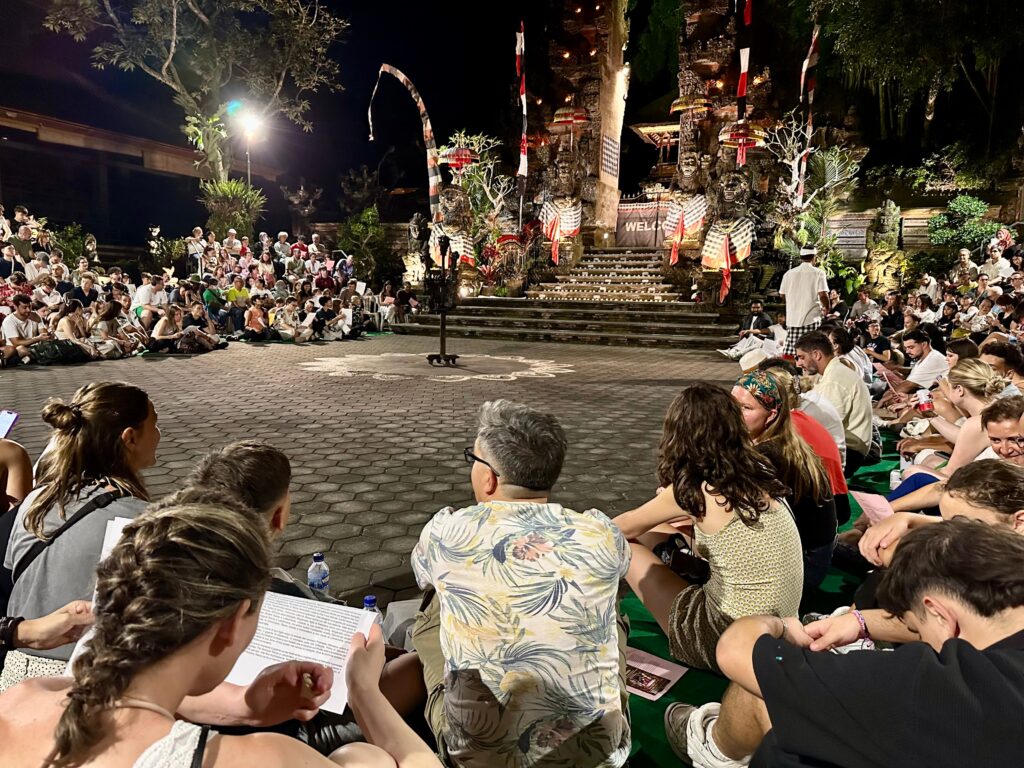
While we were waiting for the Kecak to begin, check out what Meg was doing up in the stands. When I looked up and saw her writing in her little book, it made me so happy! She was doing her writing homework!
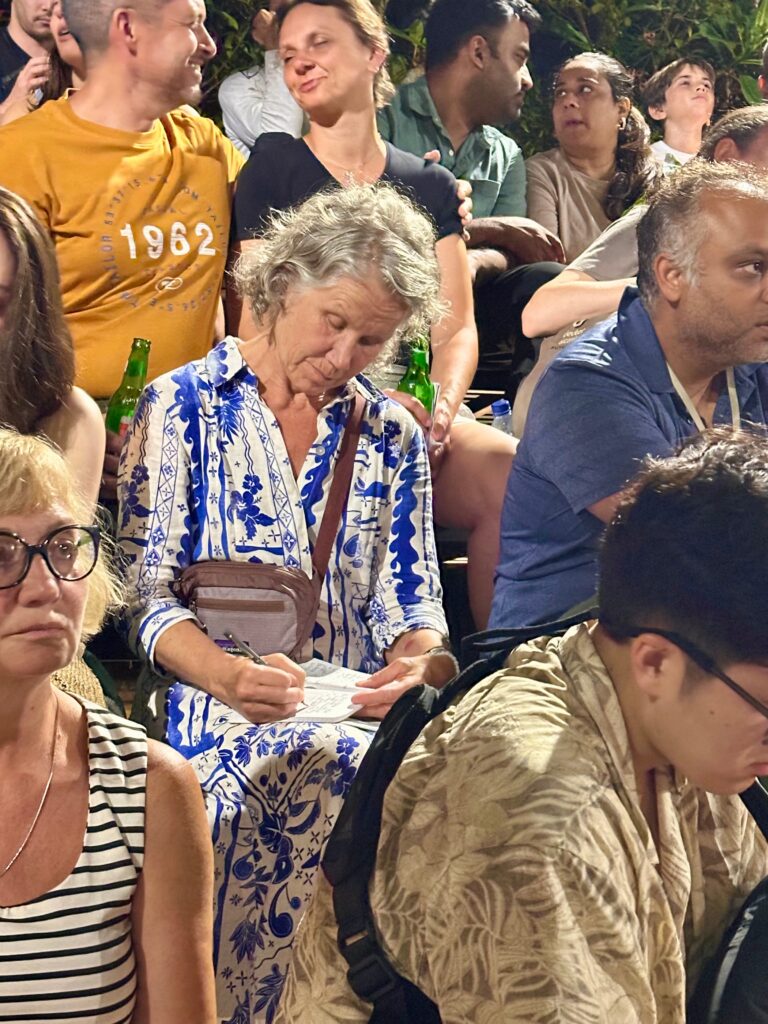
After a long wait, the lights suddenly cut out and the stage was in total darkness. A single man came down the steps carrying a torch. He walked around the candelabra in the center of the stage area, lighting it.
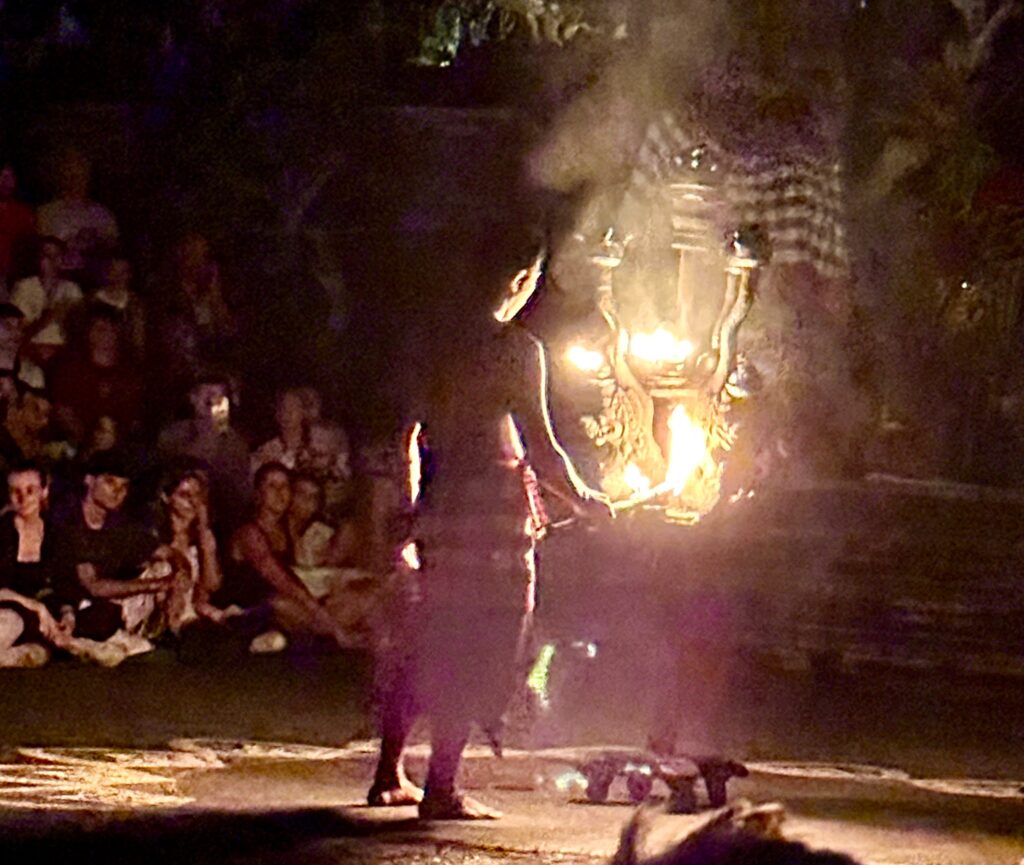
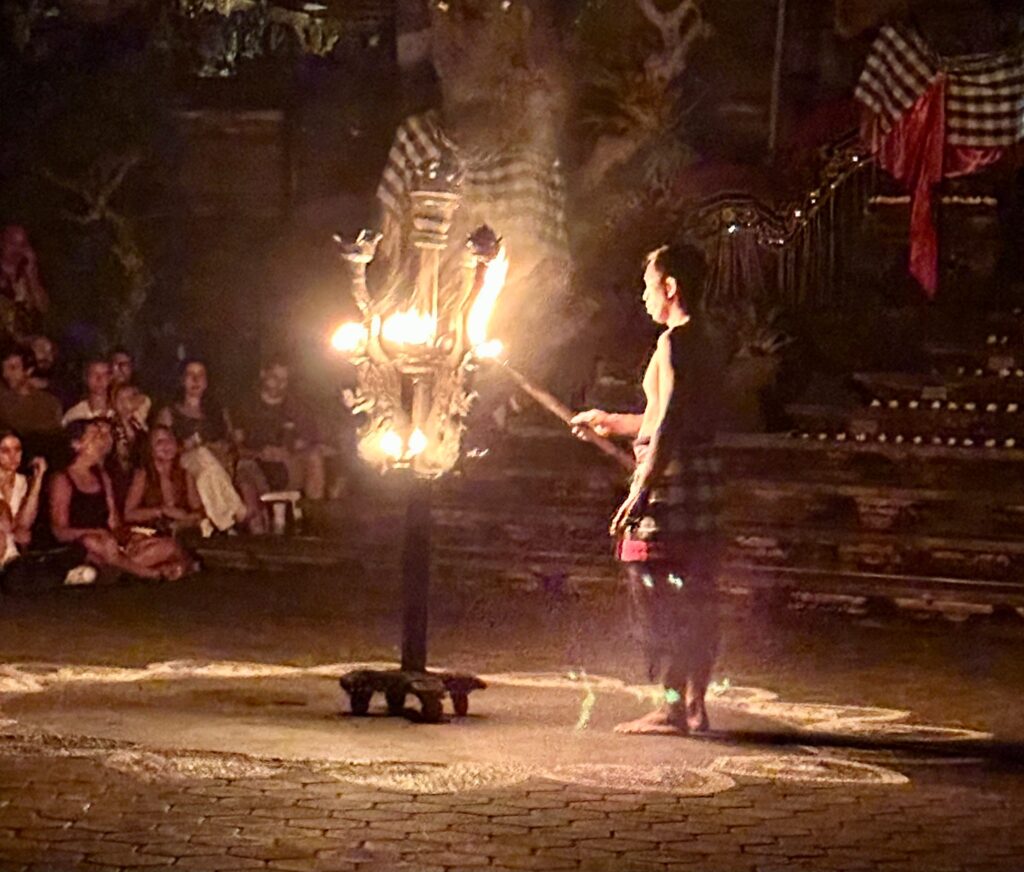
A priest, dressed in white, came out and did a blessing with holy water on the burning flames for the dance to come. And then the chorus of men, tall, short, young, old, thin and fat, clad in black and white sarongs with bare chests came down the steps and formed a circle around the flaming candelabra. With call and response, they began their deep rhythmic chanting. Sometimes they stood, sometimes they laid down on top of one another, mostly that sat in a circle, their backs to the audience, fully absorbed in their mesmerizing chant. After a time, the characters from the Ramayana began coming down the stairs, enacting the story, and the chorus just kept chanting.
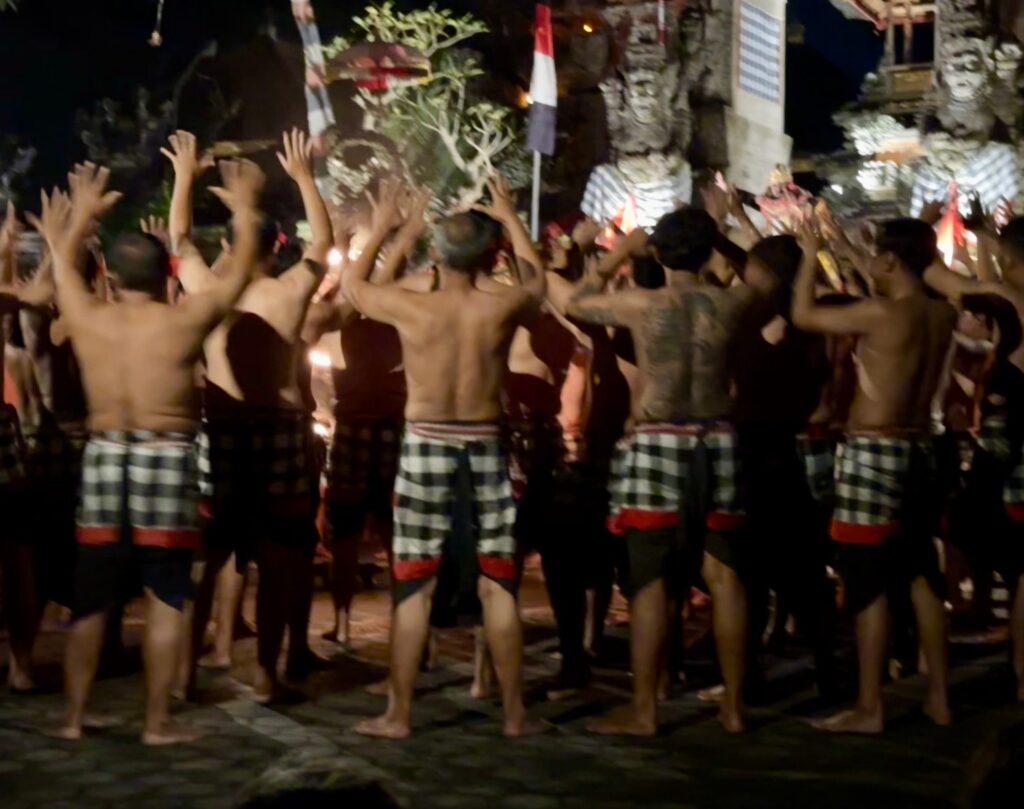
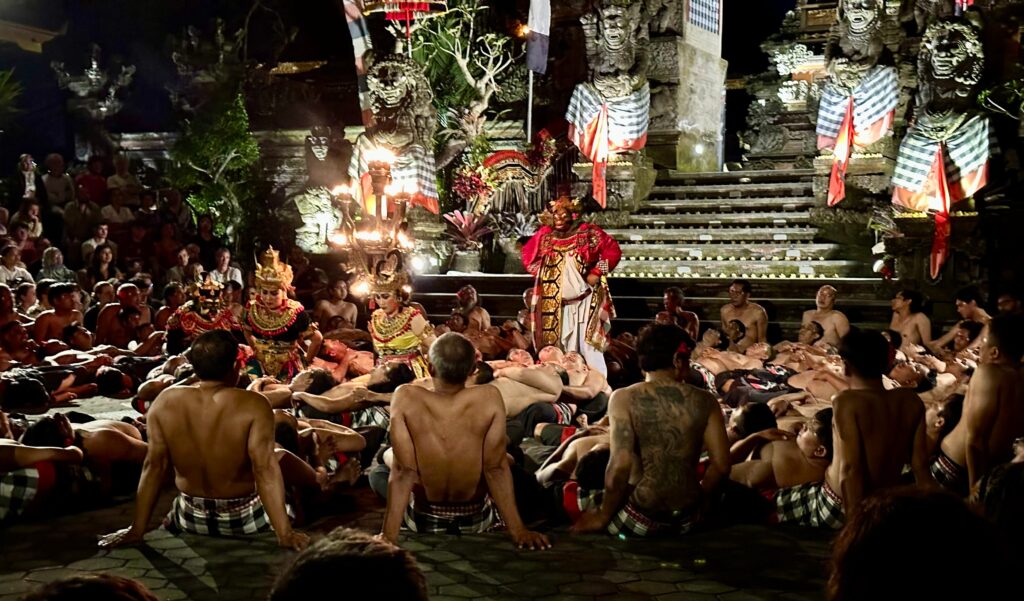
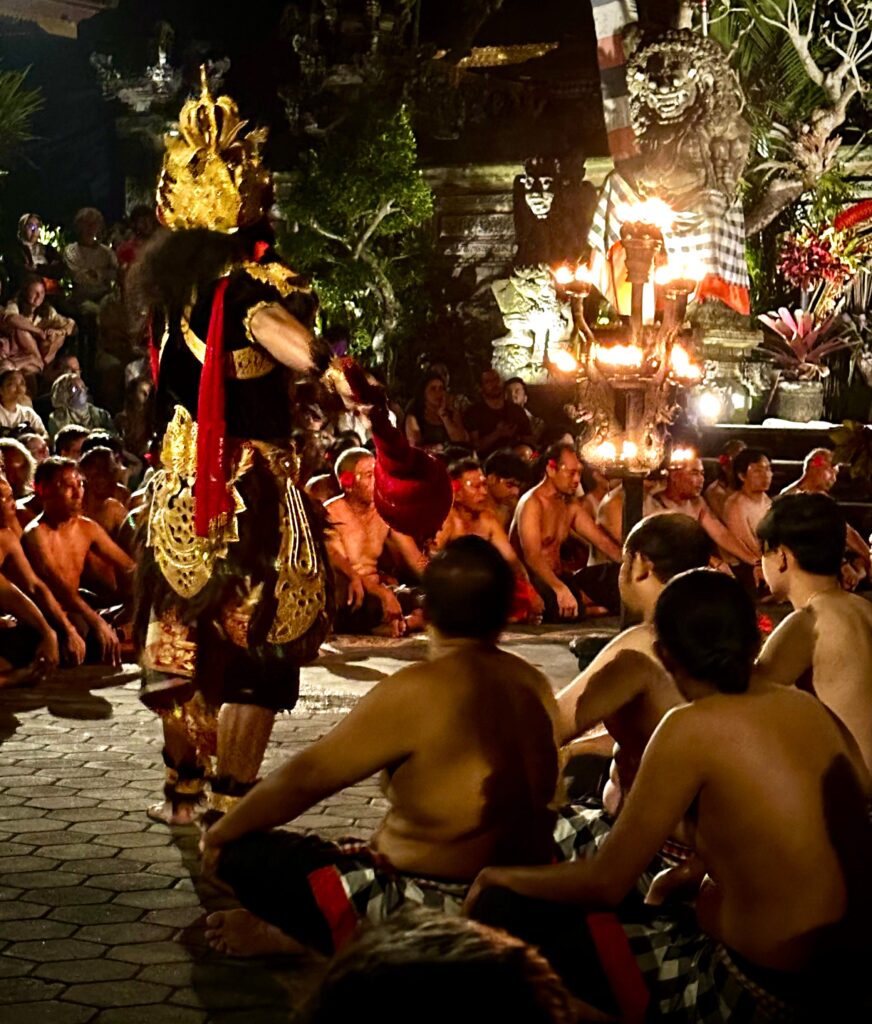
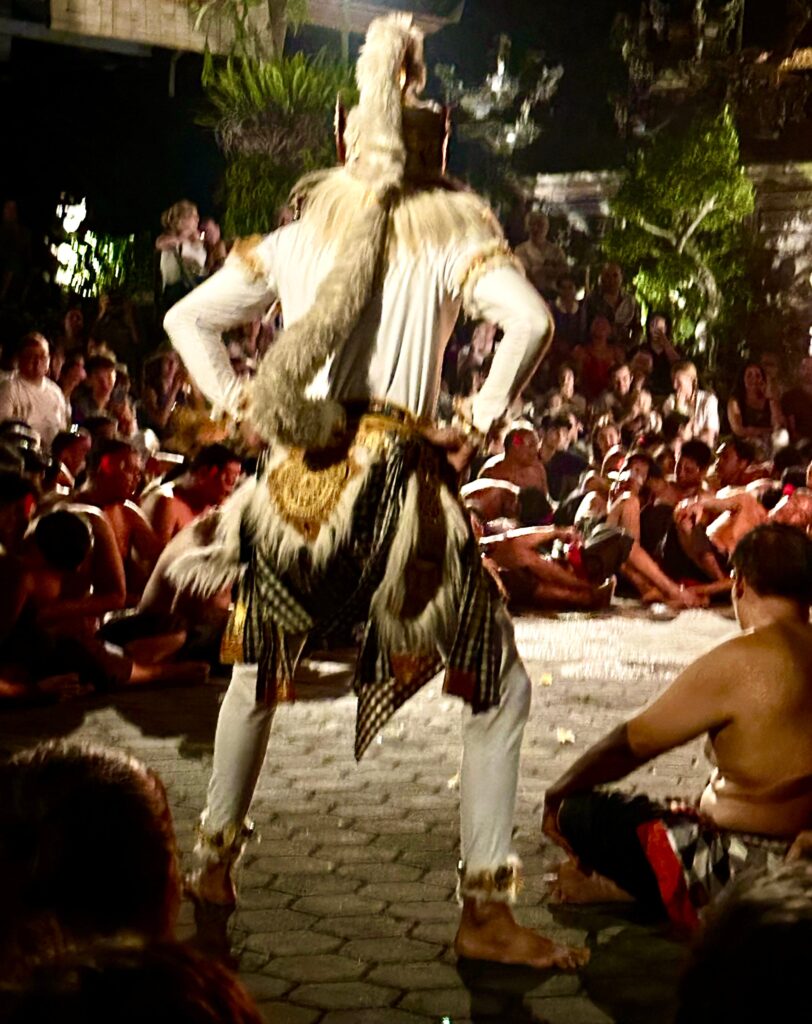
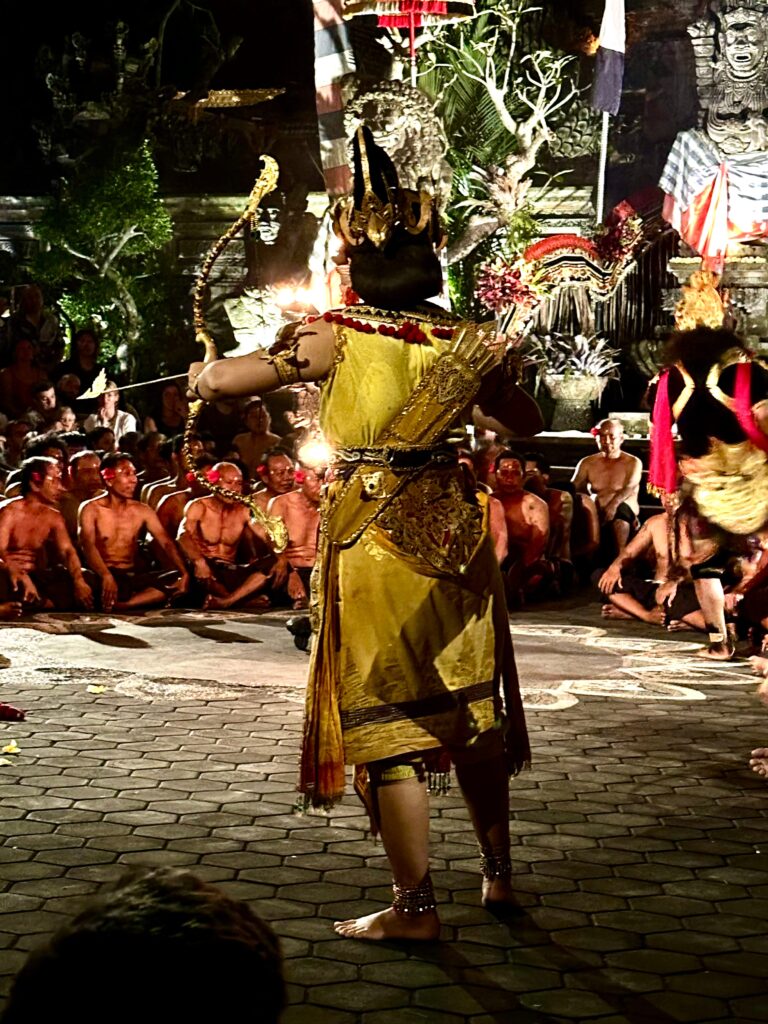
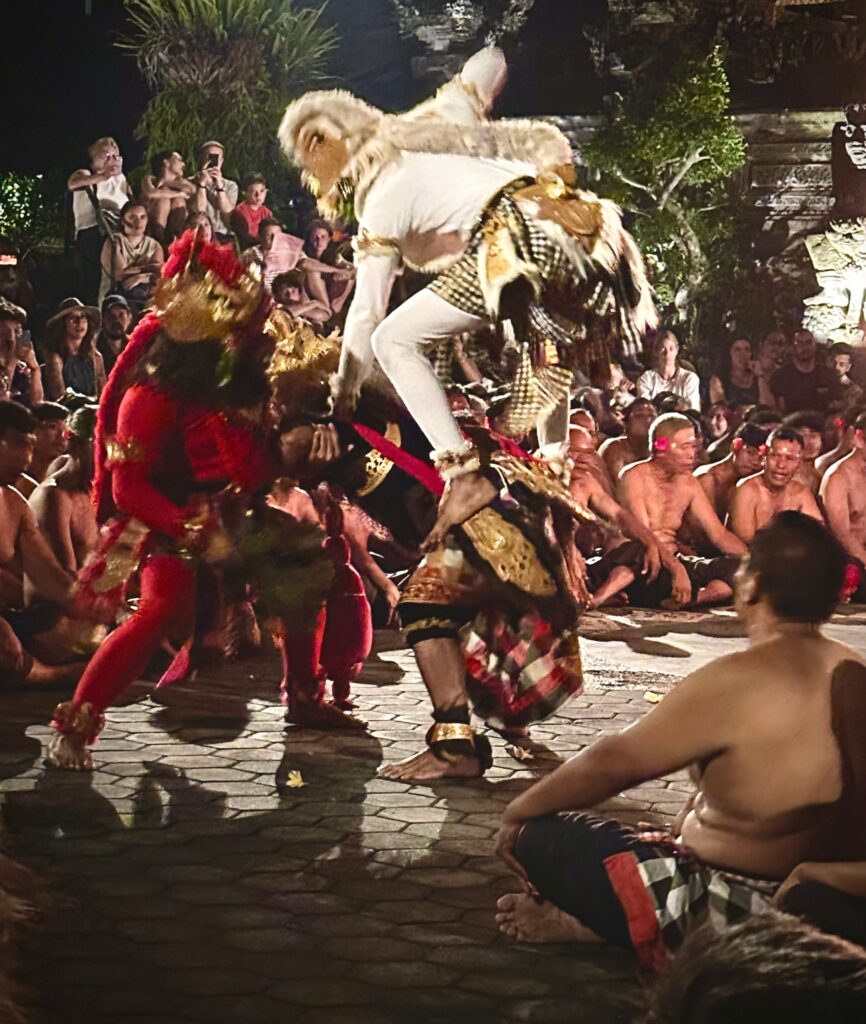
After the Kecak dance, we got to witness the Fire Dance, a God-inspired trance dance. The function of this dance is to protect society against evil forces and epidemics.
A huge sack full of coconut hulls were poured into the center of the stage. They were sprayed with an accelerant and lit on fire.
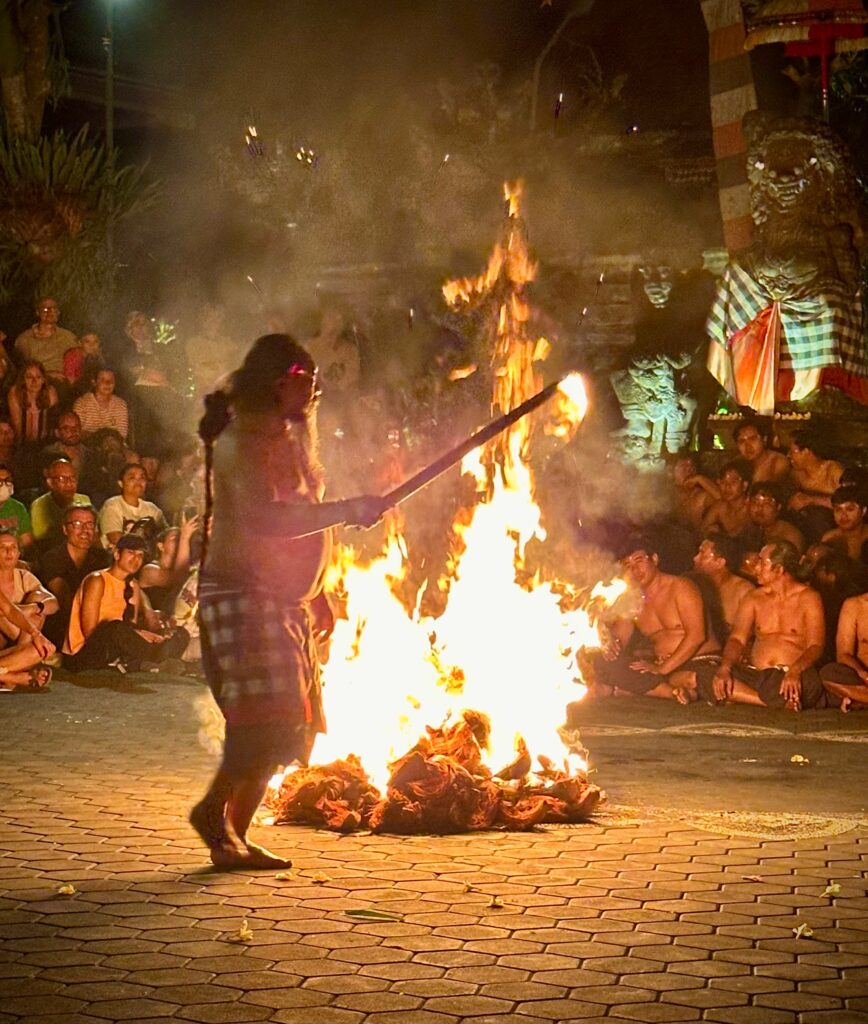
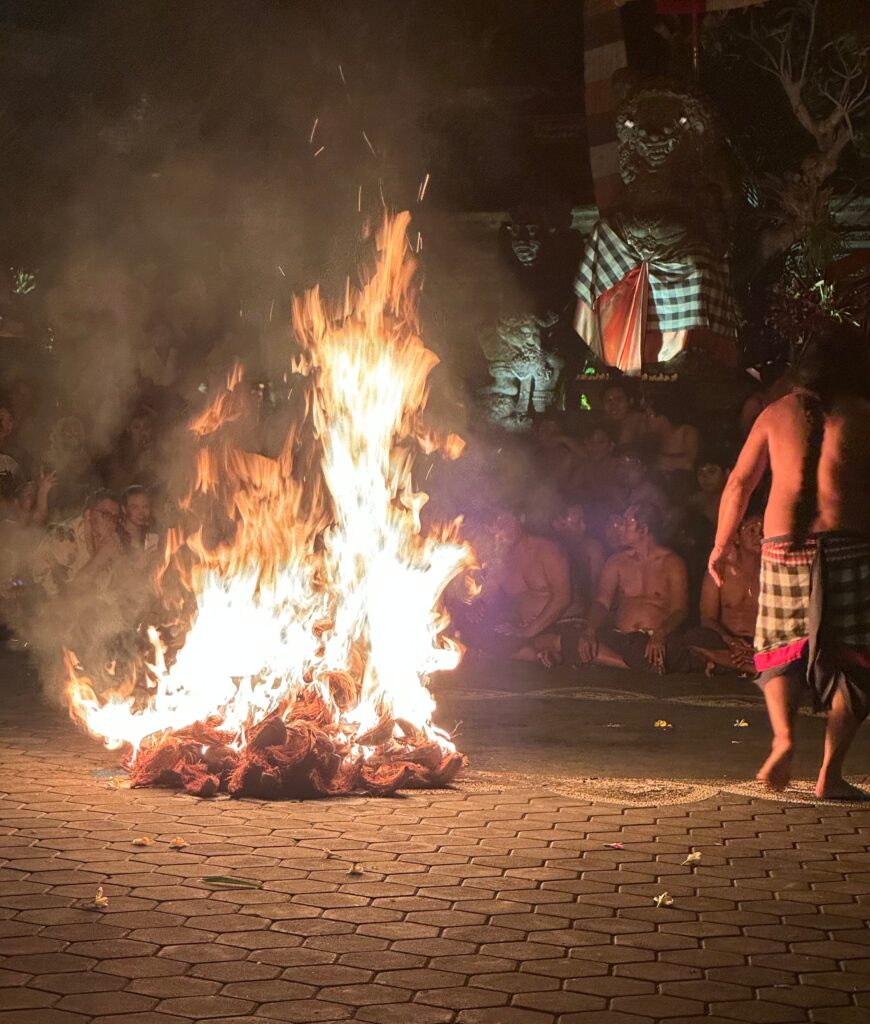
Then a priest came out to bless the blazing fire.
The chorus of men, now on the steps, chanted the rhythms of the fire dance, as a barefoot dancer, deep in trance, began running through the fire and kicking it, then picking up embers and putting them in his mouth and blowing out the embers. After each pass through the hot coals, two men rushed out with brooms to sweep the embers back toward the center, so as not to burn the first rows of audience, sitting on the ground directly surrounding the stage. As soon as the coals were heaped in a giant blazing pile again, the dancer made another pass and another, sometimes sitting down right in the coals in the darkened theatre and scattering them with his hands. It was mesmerizing, his dance and the red of the coals sparking and glowing to the chanting of the chorus.
After the coals mostly burned out, the dancer collapsed on the ground, exhausted and spent, and the priest came out and blessed him with holy water. Ten minutes, later, the trance dancer was still laying on the ground, barely sitting up, stunned.
This is what the fire dance looked like. Turn up your sound to get the impact of the chorus’ chanting in this powerful video by Kathryn Harvey:
Wow…what a night!
As we poured out of the temple after the Kecak and fire dance and began making our way down the wide steps, a steady stream of motor scooters began pouring out of a passageway on the side of the steps temple. All the scooter drivers were wearing the black and white checked sarong of the chorus—it was all the singers going home!
